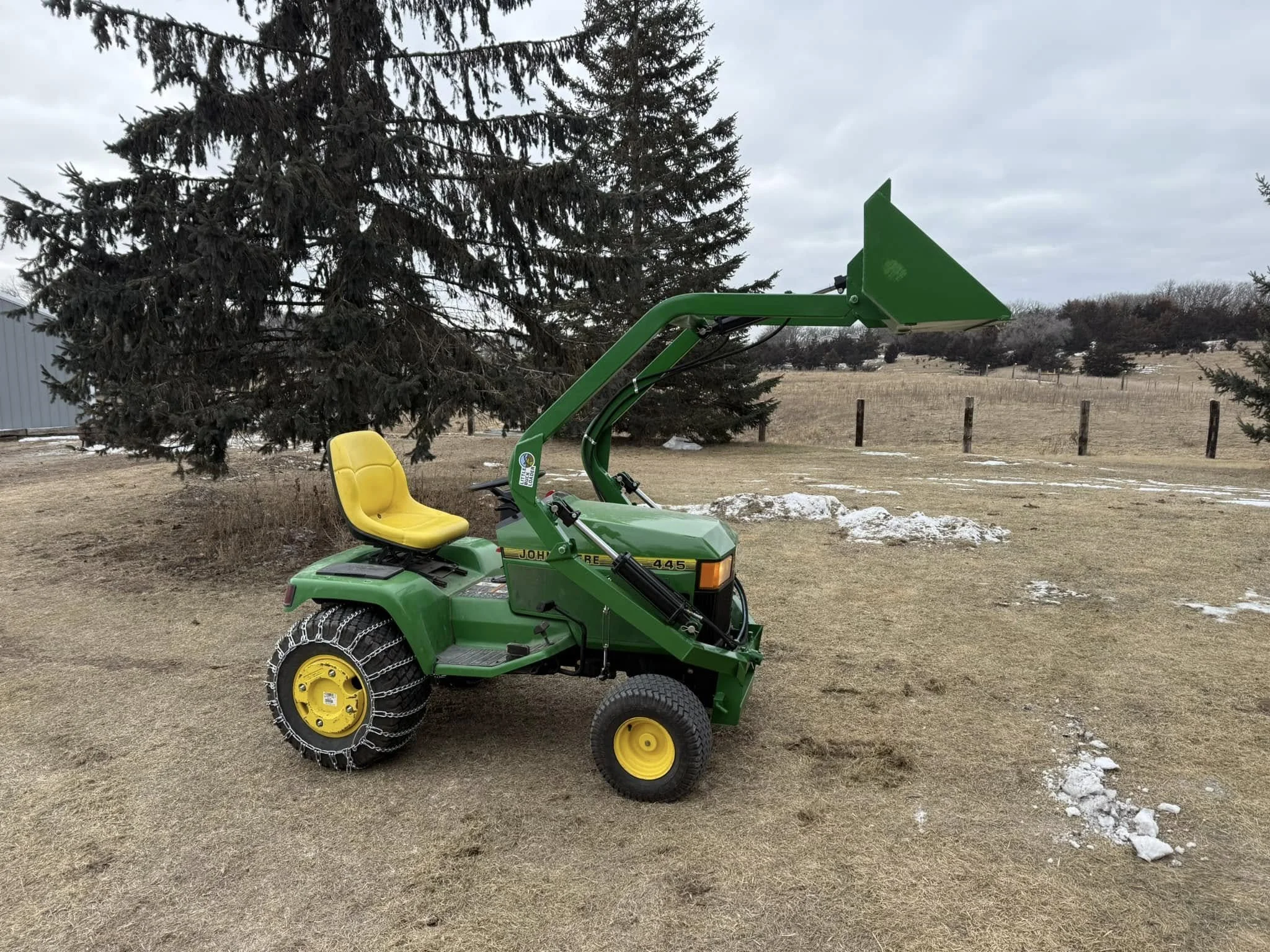The Engineering Behind the John Deere 425, 445 & 455, and Why It Still Matters
When you think of the ultimate garden tractor, the John Deere 425, 445, and 455 models always rise to the top. Built in the mid-to-late ’90s, this series marked a turning point in the evolution of John Deere garden tractors, introducing innovations that made them smoother to operate, more powerful, and more versatile than anything before.
Even decades later, the 4X5s remain a favorite among tractor enthusiasts and property owners alike, and for good reason. They’re the perfect blend of old-school durability and modern convenience. And if you’ve got one sitting in your shed (or if you’re on the hunt for one), it’s worth knowing why this series stands out, and why it pairs so perfectly with our Little Buck Loader and Little Bull front-end loader systems.
A Major Leap Forward: Hydrostatic Transmission Forward Control Pedal
The 4X5 series was John Deere’s first major move toward a Hydrostatic Transmission Forward Control Pedal, allowing you to move forward and backward without ever touching a gear shift.
Before this innovation, tractors like the 318 and 400 required what felt like three hands:
One for the steering wheel,
One for the hydraulic controls, and
One to shift from forward to reverse.
Deere’s new pedal-based hydro system made loader work, mowing, and maneuvering far more intuitive. You could steer and control your loader without ever breaking your rhythm, making this the first “modern-feeling” Deere garden tractor line.
Built Tough, with a Few Quirks
Another hallmark of the 4X5s was Deere’s updated styling. Out went the classic metal hoods and in came streamlined plastic body panels that gave the series its signature sleek look.
The only catch? Over time, those plastic panels can become brittle and prone to cracking. But here’s the good news, if you find a 425, 445, or 455 that’s mechanically solid but showing some cosmetic wear, it’s a simple fix.
With a bit of fiberglass matting and resin, you can glue cracked panels back together and finish with a little paint touch-up. The result? A tractor that looks sharp and is ready for another 20 years of reliable use.
A Perfect Match for Front-End Loaders
When we design equipment at Little Buck Loader, we’re always thinking about how the machine feels to operate, and the 4X5 series hits that sweet spot.
Because of its Hydrostatic Transmission Forward Control Pedal, rock-solid frame, and balanced hydraulic system, it’s incredibly well-suited for front-end loader work. The Little Buck Loader fits seamlessly on the 425, 445, and 455, giving you the ability to move mulch, gravel, snow, and more, all without stepping up to a compact utility tractor.
And if you’re looking for even more capability, the Little Bull offers the same precision with an updated mounting system that results in more lifting capability.
Why the 4X5 Series Still Holds Its Value
Ask any seasoned Deere owner: the 425, 445, and 455 models are some of the most dependable, easy-to-service tractors Deere ever made. With features like liquid-cooled engines, power steering, and rear hydraulic ports, they’ve become a collector’s favorite, not just for nostalgia, but because they still get the job done today.
Pair that kind of staying power with a modern attachment like the Little Buck or Little Bull, and you’ve got a machine that bridges generations, one that’s just as practical as it is classic.
In Short
The John Deere 425, 445, and 455 series represent the best of both worlds: rugged old-school reliability with enough innovation to still feel modern. Add a Little Buck or Little Bull loader, and you’ll understand why so many owners call this combination the ultimate setup for small-acreage work.
Related Reads:
